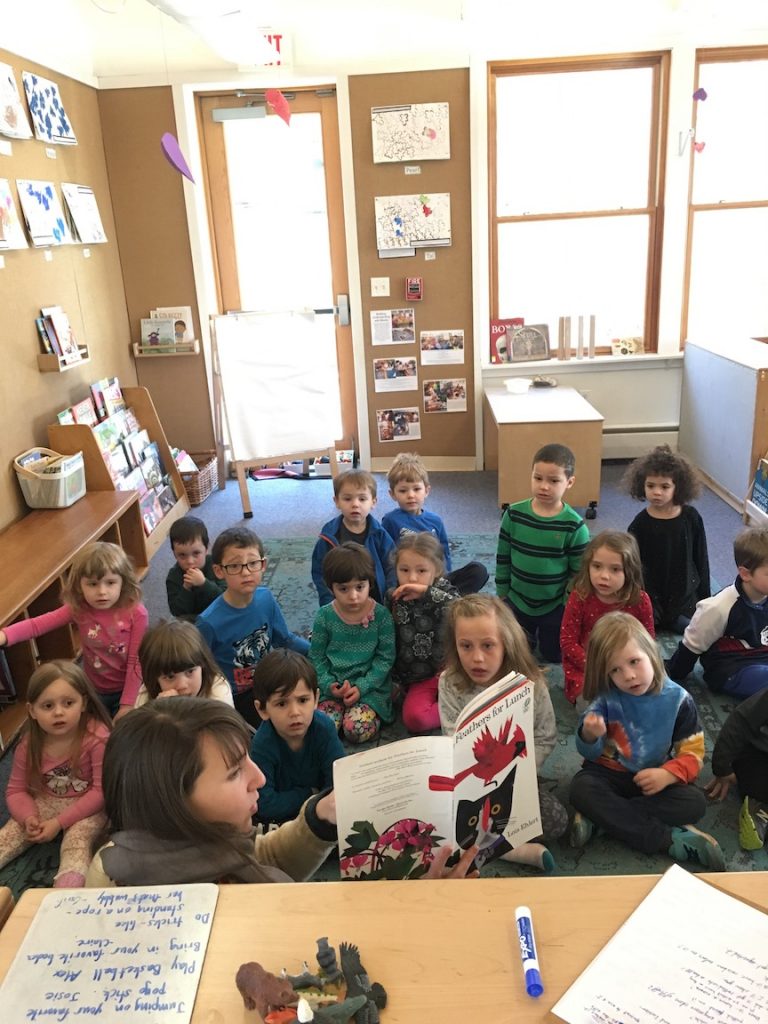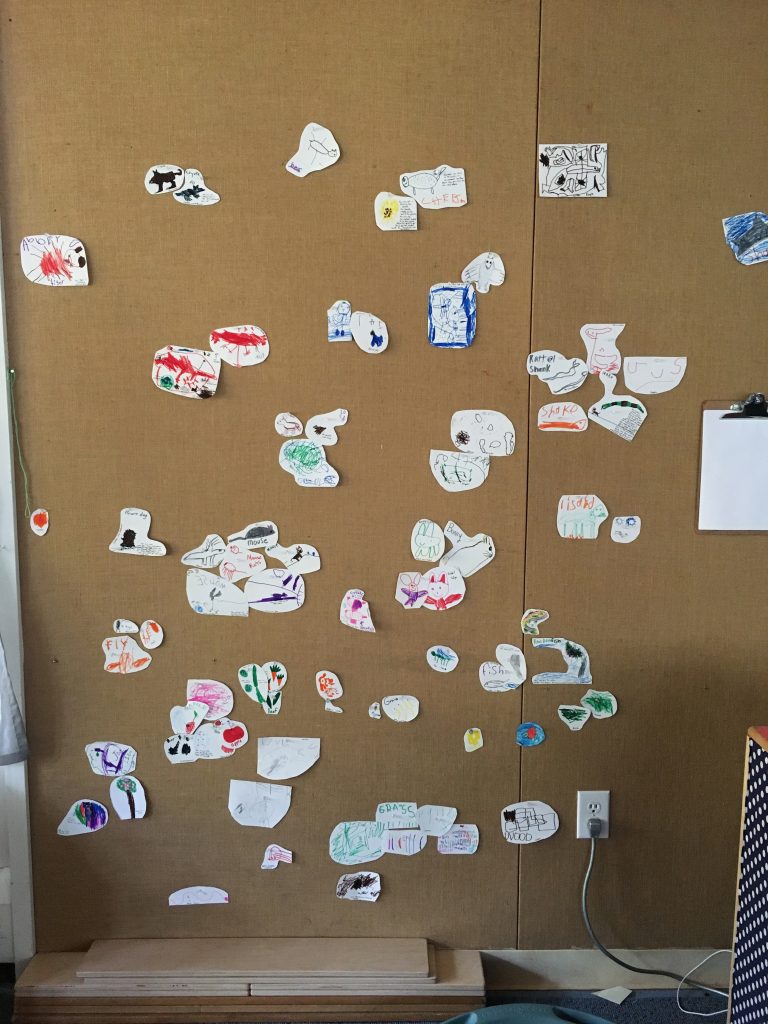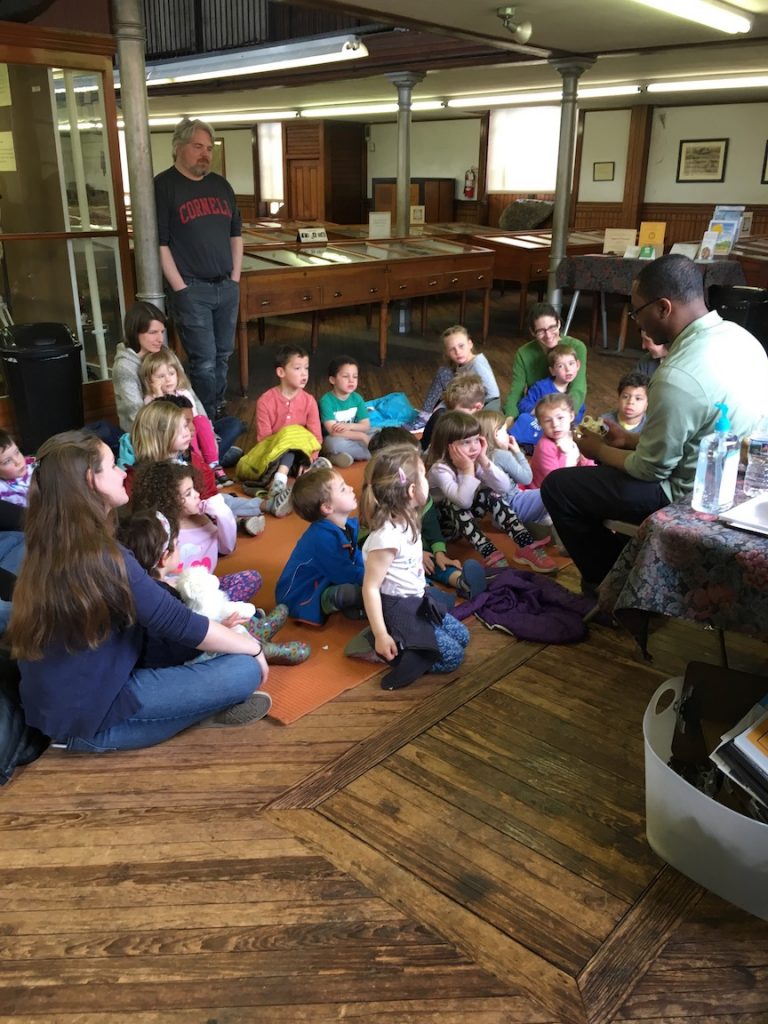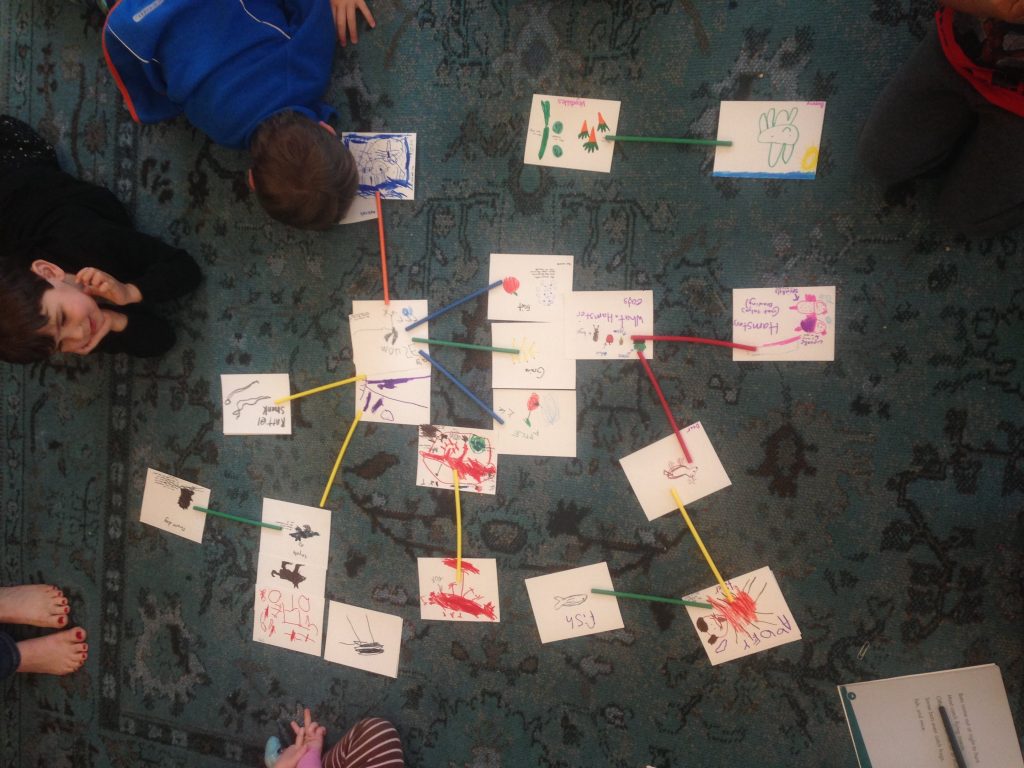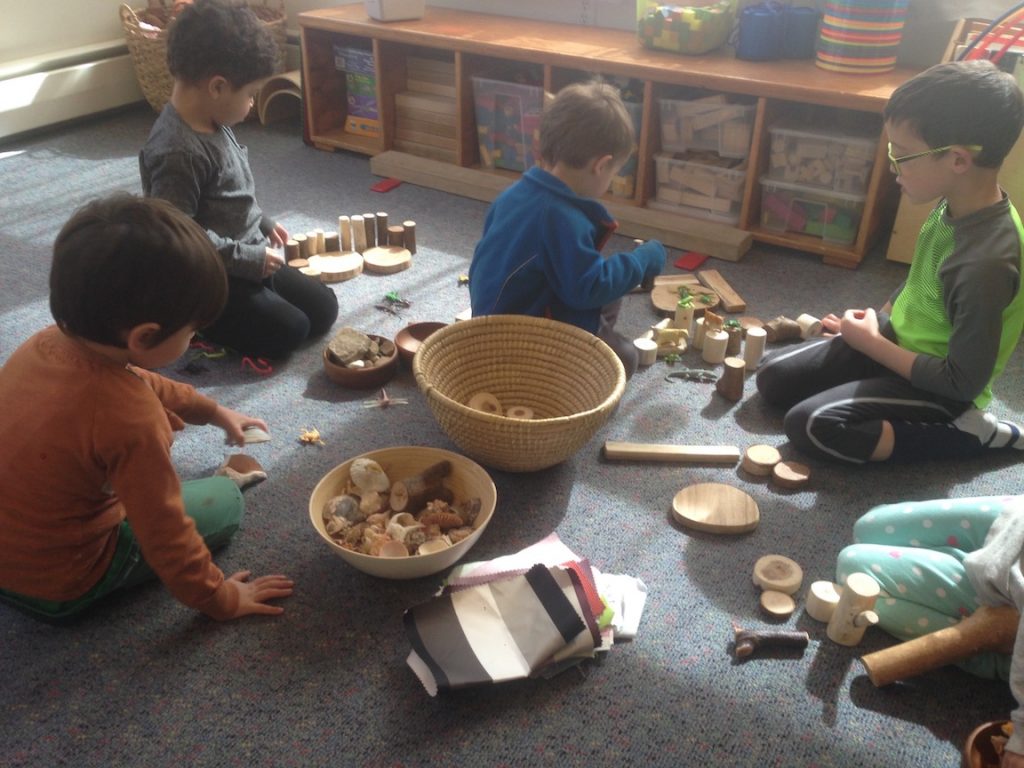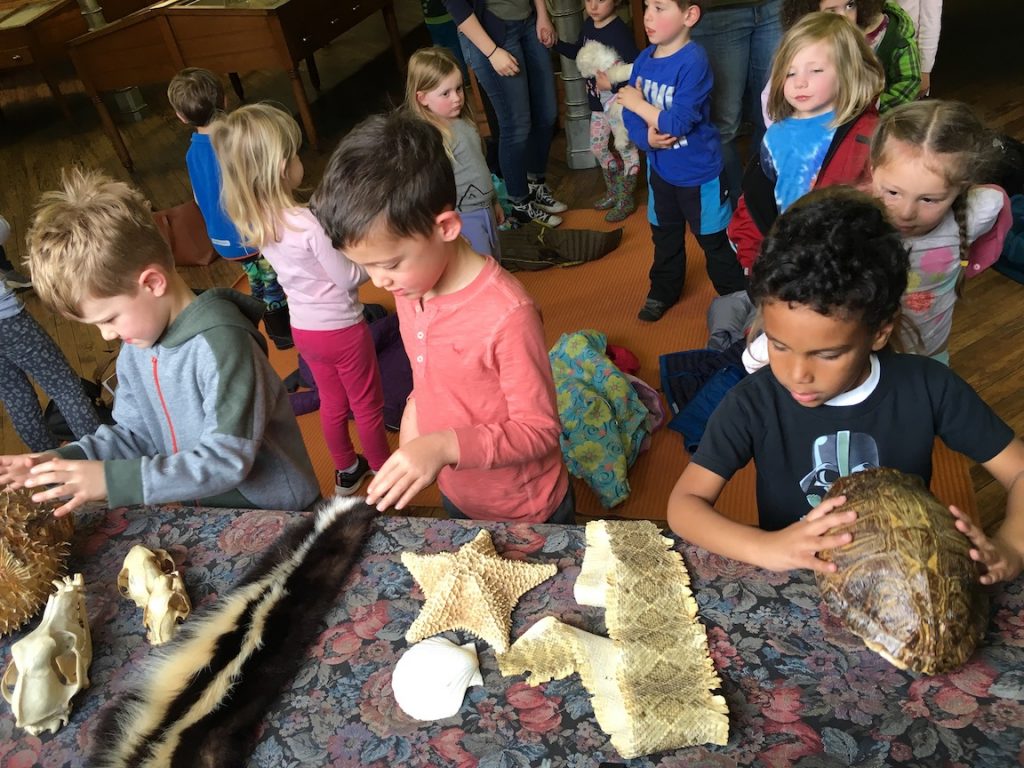Is elephant blood orange, and other questions…

Recently in the Miquon Nursery, a child-led game of “bird family” emerged–a scenario which involved baby birds hatching in a nest, practicing learning how to fly (by jumping off the Playbarn), and engaging in all kinds of dramatic play including gathering food and returning to the nest. We built a large nest with sticks and leaves over the course of the week.
In any given year in the Miquon Nursery, teachers nurture child-led play and see how it develops. This follows the Reggio Emelia approach of an emergent curriculum–when themes emerge in a consistent way that gain momentum and children’s interest. Since interest is tied to motivation to learn, our Miquon teachers gently scaffold children’s innate curiosities, building on them with new opportunities for foundational skills and concepts in art, science, social studies, language arts, and math.
This year, the Nursery exploration of animals grew as children made their own animals and safe places for them to live with found materials outside in our Nursery Playground.
We began to wade deeper into an exploration of animals and habitats, predators and prey. We asked the children what they know about animals and what they wonder about animals.
They shared fantastic information, including:
- owls have wings
- zebras have stripes
- elephants have trunks
- purple martins fly
- snakes slither
Together, we also wondered . . .
- where cheetahs sleep
- what tigers eat
- how kitty cats see with their eyes
- what mice like to eat
- is elephant blood is orange
- “What is a predator of otters?”
From there, we continued our inquiry, taking up the children’s questions, looking for the ways these questions show up in play, and deepening our thinking about animals.
We carefully selected relevant texts to complement this emerging study of animals. We read and acted out Swimmy by Leo Lionni, read Feathers for Lunch by Lois Ehlert. We loved reading Fox by Kate Banks and Georg Hallensleben, the story of a young fox learning how to hunt, hide food, and escape from predators, and wondering when he’ll be ready to go out on his own. We also researched the ways animals get their food by reading excerpts from How Many Ways Can You Catch a Fly? by Steve Jenkins and Robin Page.
In addition, art is always a useful lens for understanding in the Miquon Nursery. Inspired by What Do You Do if Something Wants to Eat You? By Steve Jenkins, we drew what we would do if something wanted to eat us, and added watercolor paint to create the setting. There were stories of foxes being chased by spiky fish, spiky spiders keeping red foxes away, cheetahs being kept at bay by cactuses, and even a firefighter ready to help someone (though a predator hadn’t shown up just yet).
And naturally, we made use of our ample outdoor play space–building habitats using tree blocks, shells, rocks, and small animal figurines. Children played animal helpers, vet office, and puppy family during their free play. Later, one of our Nursery parents (who is also a veterinarian) visited our classroom to share her experience caring for animals. Each child brought a stuffy from home with which to practice their caregiving.
Last week, we visited the Wagner Free Institute of Science. We learned about animal adaptations with Mr. Aaron, and explored predator and prey relationships. After our conversation and exploration of the turtle shell, snakeskin, porcupine skull, porcupine fish, German Shepherd skull, caracal skull, scallop shell, sea star, and tiger shark jaws, discussion ensued.
Mr. Aaron: What do you think this fur is from?
L: Stinky!
Mr. Aaron: Yeah! It’s a skunk!
P: What’s the part with it’s mouth? They spray stinky stuff.
Mr. Aaron: That’s its head.
A: If it goes on your body, you have to take a tomato juice bath.
Mr. Aaron: And this is an animal that will often chase skunks, it’s a German Shepherd.
L: Can they spray off smelly things?
Mr. Aaron: They usually give a warning before they spray. First they turn around. Then they do a stomping dance. Then they lift up their tail. By then it’s pretty much too late!
Aaron: So, when they spray, do they close their eyes and smile?
Mr. Aaron: Maybe.
In recent days, we’ve taken the study a step further, diving deeper into our exploration of animals and the food chain, and began the process of making our own food web together. We explored food chains by reading Porcupine’s Picnic by Betsy R. Rosenthal, Who Eats What by Patricia Lauber, and Trout Are Made of Trees by April Pulley Sayre.
First we drew an animal of our choice and its food with our older buddies from the Miquon third and fourth grades. As we started to talk about particular animals in stories (and drawing on our interests), we found we needed to add vultures, alligators, birds, termites, ants, and gazelles to our web.
As this study continues to expand and grow, so will the children’s world view. Time and time again and since the beginning of Miquon in 1932, we have found that augmenting our planned instruction with time for our students to explore their curiosities actually drives their motivation to learn.
This basic idea is behind all that we do at Miquon–check out more behind our educational philosophy by reading up on our Nine Tenets.
